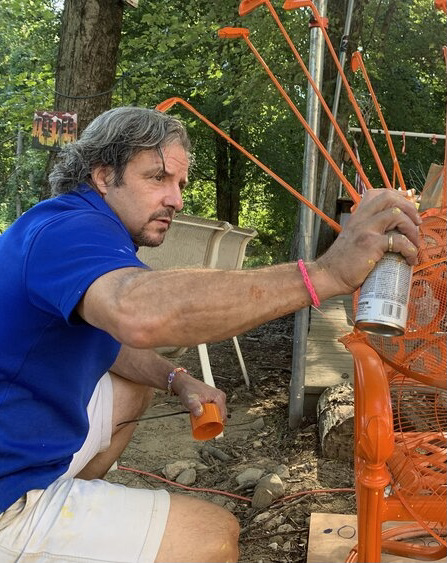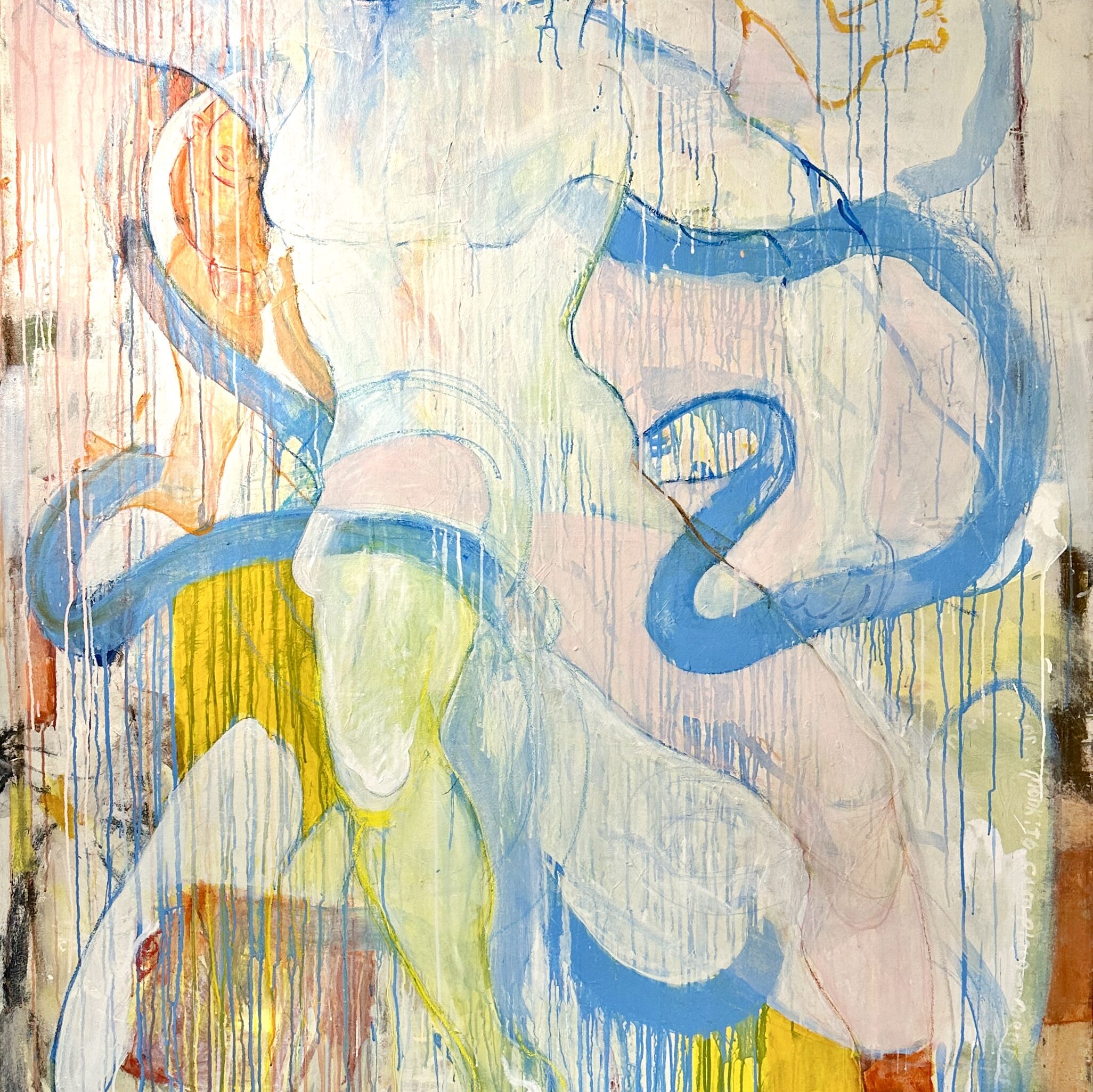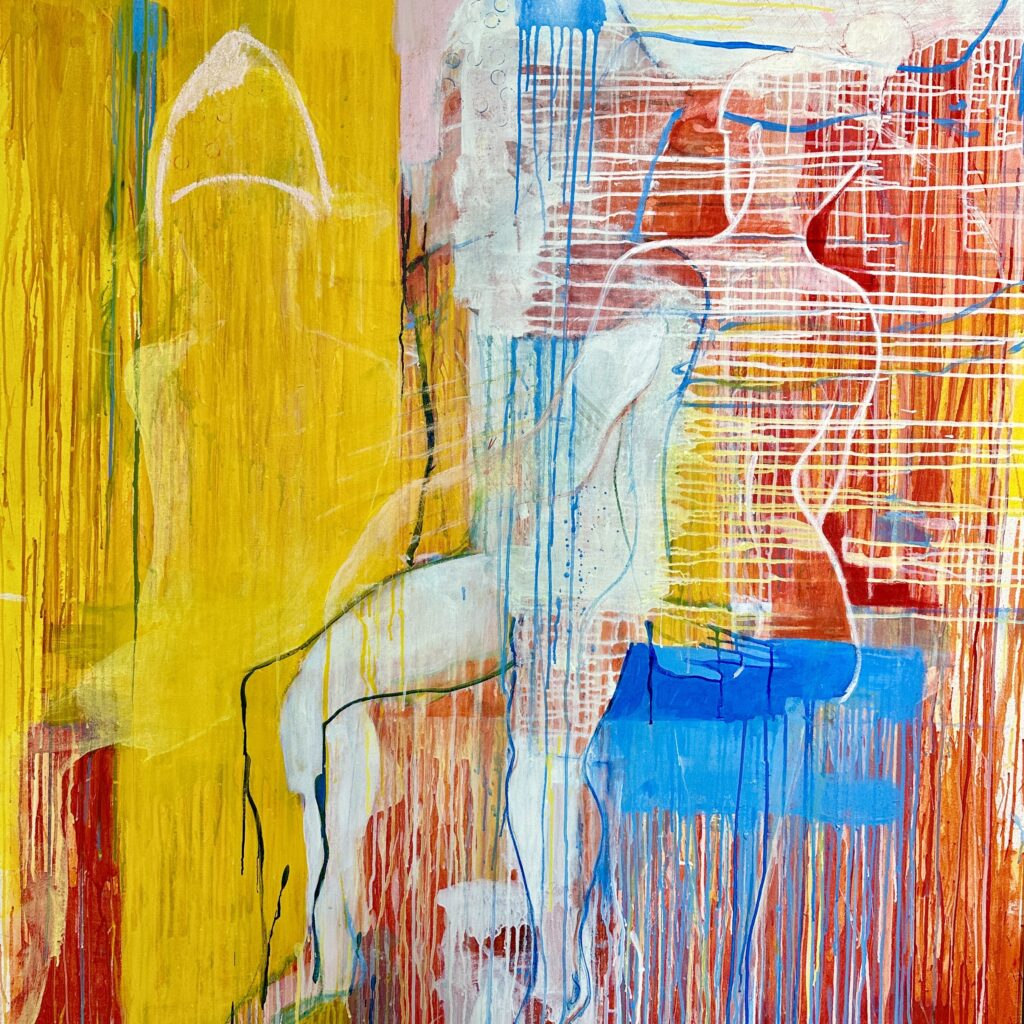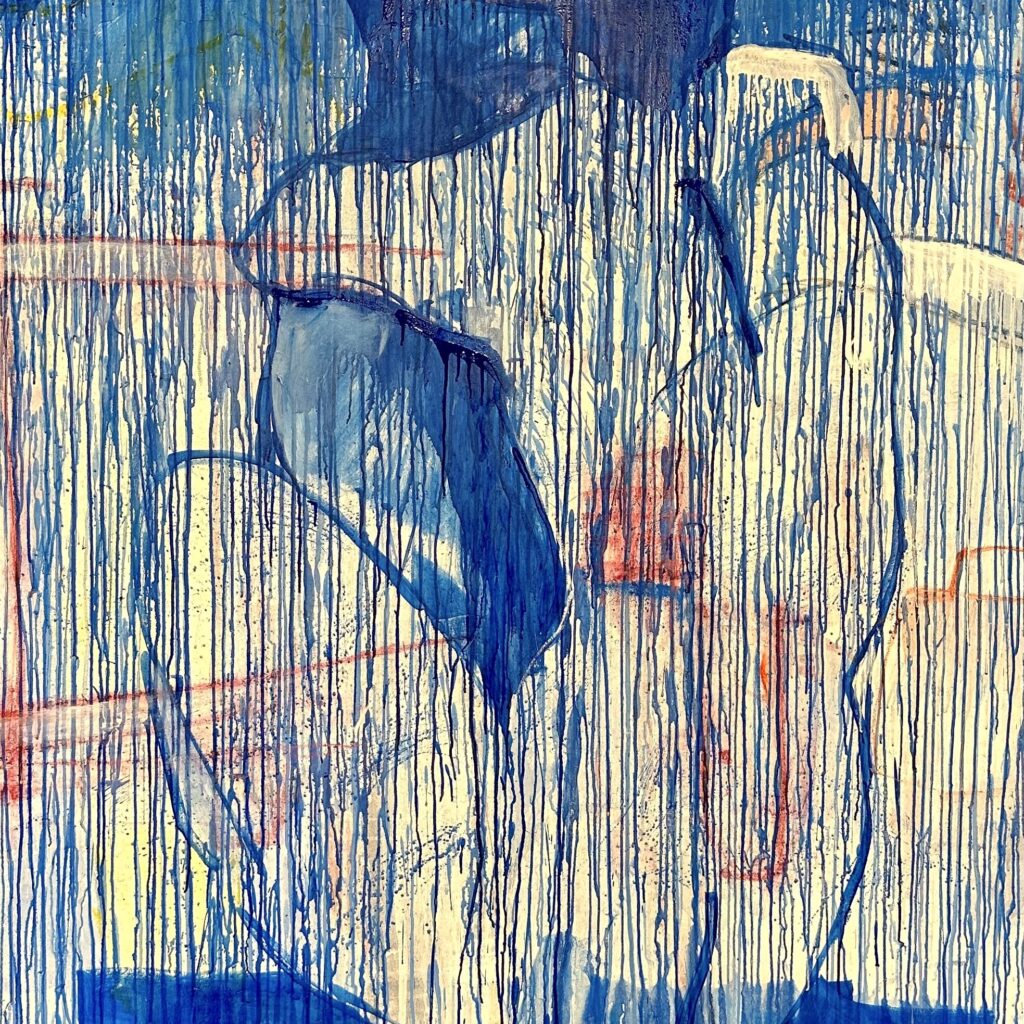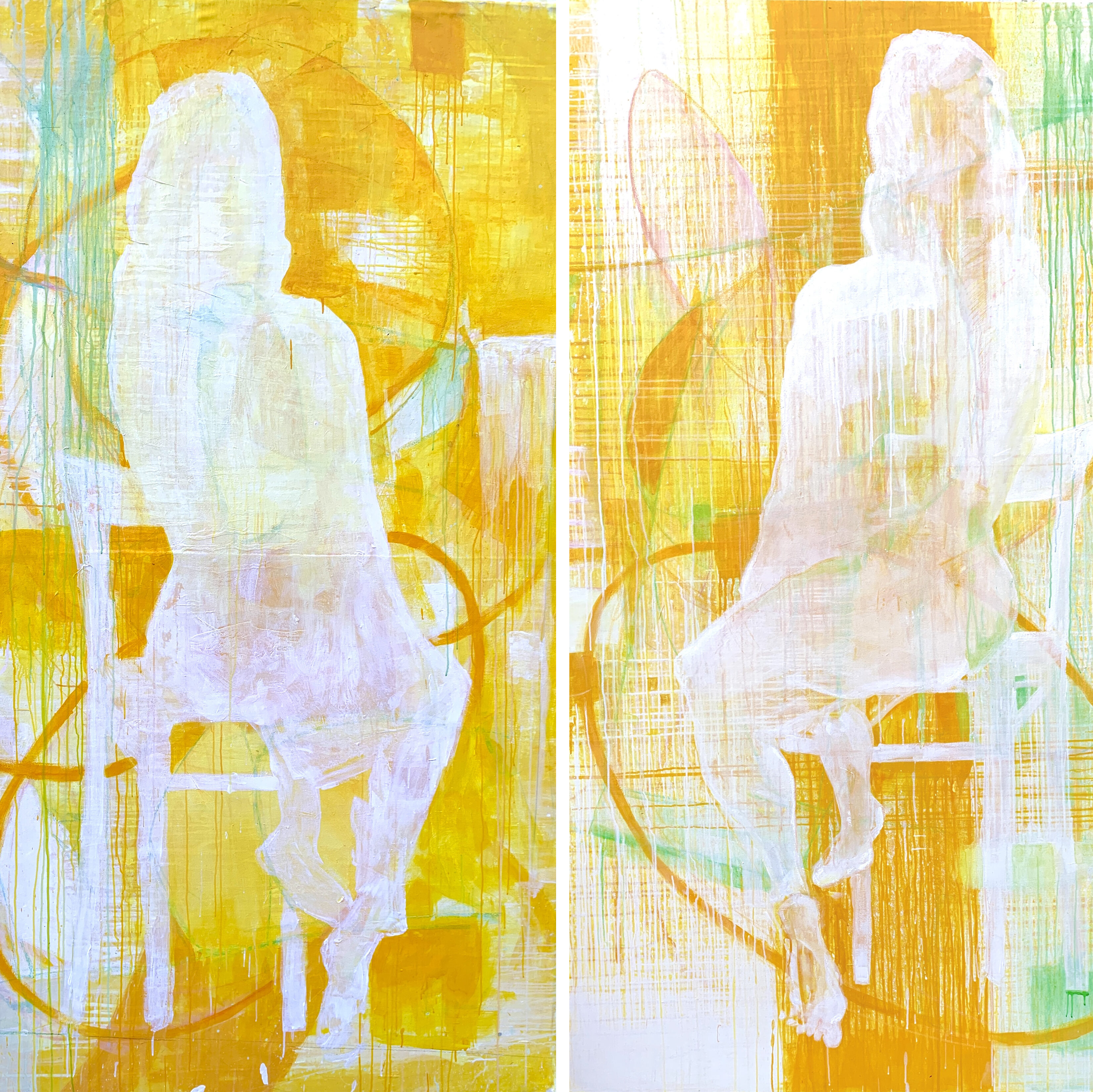In the Studio with Michael Manning
May 1st, 2024
Painter Michael Manning virtually sat down with us to discuss his background, what motivates him as an artist, and the ins and outs of his painting practice. The dual and ambivalent nature of human beings has long been a dominant theme in Michael Manning’s work. His paintings often situate human and animal figures in otherwise abstract environments. Although recognizable forms are asserted with dynamic lines and bold silhouettes, overlapping transparencies can lend them a subtle, shadowy presence.
Manning’s process is typically revealed in visible layers of drawing and painting that introduce, deconstruct, and nearly wash away his protagonists. This layering functions as a record of creative time and change, but can also insinuate multiple sides of a person or situation. While Manning’s work is process oriented and driven visually by formalist decisions, the motivation for the subject matter often uses larger, universal moral messages found in mythology and religion as thematic inspiration.
CBCA: What’s your background? Did you always want to be an artist?
MM: I have a BFA from the University of the Arts and an MFA from Montclair State University. Art has always been a central focus in my life, a realization that first occurred during high school. It has served as a guiding point, exposing me to various places, people, and opportunities that I might not have encountered without it.
CBCA : What excites you to make your work? Why do you make art?
The excitement I feel about creating art and the reasons behind it are essentially two sides of the same coin. Internally, it’s a sensation—a necessary and balancing aspect of my life that has become a habit over years of training. The primary excitement comes from the process of working, especially connected to emphasizing the physicality, scale, movement, patterns, and rhythm tied to the canvas as it relates to my body size. I like to relate this to Da Vinci’s Vitruvian Man, with natural most comfortable canvas sizes corresponding to my body’s dimensions. This incorporation of full-body movement in my paintings adds a certain sensation during the act of creation. There’s something about making a line with a full-body movement that is completely satisfying. Using colors, shapes, and patterns that are important in and of themselves, while at the same time using images to convey a story, are at the core of what excites me about creating.
CBCA: What kind of creative patterns, routines, or rituals do you have? What time of day do you prefer to work?
MM: Overall, my work combines concrete and abstract imagery, emphasizing powerful shapes and lines, often rooted in storytelling with references to mythology, politics, social issues, and personal experiences. When working, I often look for unexpected intriguing areas to focus on. I especially enjoy finding these small moments that are often unplanned yet part of how I organize and balance the overall imagery. Ironically, I consider a painting complete when I only focus on these small details and movements, rather than managing large portions of the canvas.
I can work almost any time of the day but prefer late morning or early evening. Regardless of the time of day, once I find a rhythm, the process of working takes over, bringing momentum and deeper creativity.
CBCA: How do you begin your work? Do you research? If so, how?
MM: Often the way my work sessions start involves mixing colors, turning a canvas in different organizations, and often drawing before I tackle bigger movements in the paintings. My work tends to be series-based, focusing on a theme or idea for a minimum of a year or two. Because of this, research plays a crucial role in my work, especially when exploring series based on themes like the epic of Gilgamesh, everyday acts of kindness, empathy, and my current series based on The Odyssey. The research is often used as a springboard to think about a theme or unifying subject matter within the paintings. It helps inform the imagery and acts as a vocabulary or building blocks to create the imagery.
CBCA: What thoughts go through your mind when you create?
MM: Often I try not to think when I’m actually creating. It seems weird to say, but it’s very similar to the notion of meditation in action. I’ve been involved in a number of martial arts most of my life. Currently, I practice Kendo, and as with any focused physical movement or sport, it is often a negative to overthink things when in the moment. I’m not actually analyzing every single movement at the moment. I’m involved and focused on what I’m doing but not necessarily thinking about it. The decision-making often comes after a certain movement or application of a section of paint has been added, at which I can then step back and look at it for its balance and continuity.
CBCA: What informs your work? What themes do you pursue?
MM: While painting is my primary medium, my strong drawing background informs my approach. I’m also interested in storytelling and meta-narratives while finding excitement in the discovery of line as a line and paint as paint or underlying idea. Although my work is driven by process and formal decisions, the subject matter in much of my work leading up to the new series is often inspired by universal moral messages found in mythology and religion. Combining formalist ideas with specific content may seem contradictory but has allowed me to find a certain purity and maintain an allegiance to the canvas, while also addressing broader questions of morality and human nature.
CBCA: What are you trying to communicate with your art?
MM: While my work is driven by process and formal decisions, the subject matter in much of my work leading up to the new series is often inspired by universal moral messages found in mythology and religion. Combining formalist ideas with specific content may seem contradictory but has allowed me to find a certain purity and maintain allegiance to the canvas while also addressing broader questions of morality and human nature. The combination and balancing of the formalist creation of the image along with an underlying story or meta-narrative are what I am trying to communicate.





